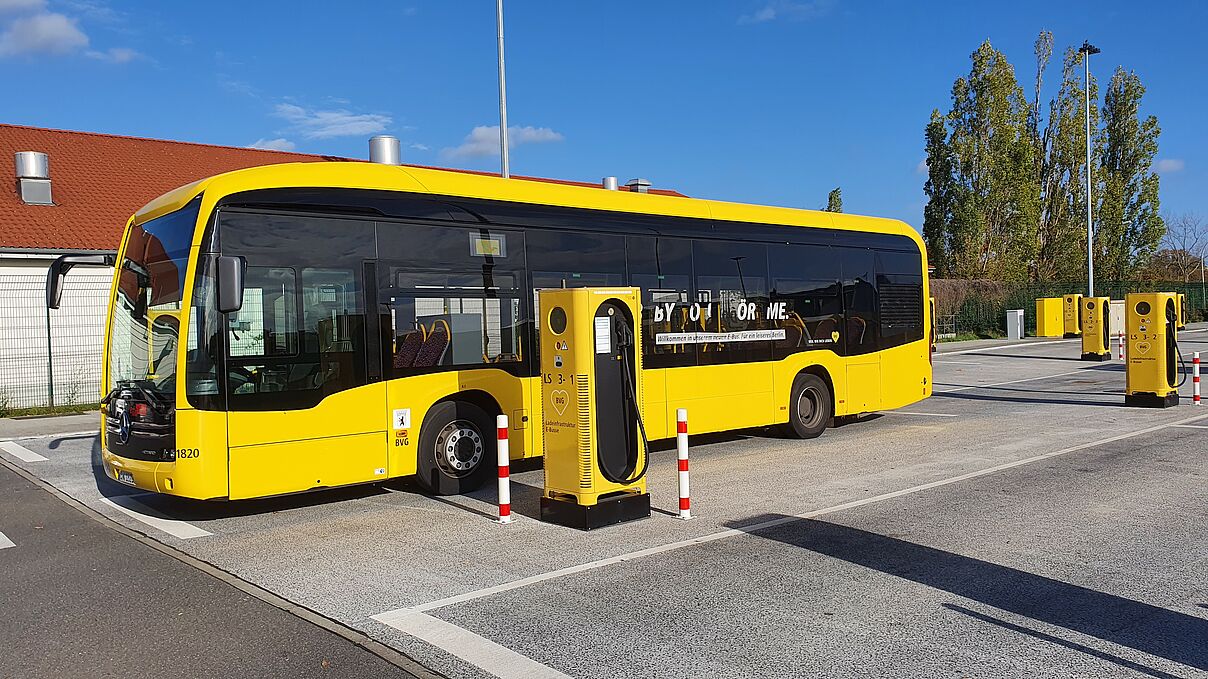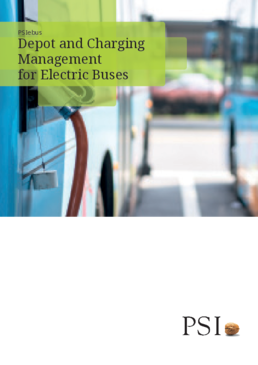Using artificial intelligence in their operations opens up a wide range of opportunities for bus and rail operators to improve the range of their mobility products. An important aspect is the optimization of timetables and route planning. Intelligent algorithms integrated into the control systems analyze large amounts of data, such as traffic data, passenger flows or historical timetable data, to create optimized vehicle rotations and timetables.
Intelligent algorithms that are integrated into the control systems analyse large volumes of data such as traffic data, passenger flows or historical timetable data in order to create optimal routes and timetables. This allows the available vehicles to be optimally deployed and waiting times and delays to be reduced. Dispatchers are significantly supported in their work and have more room for manoeuvre for the strategic control of processes.
In addition, many operators are adding AI components to their systems in order to be able to inspect and maintain their vehicle fleets even more efficiently and economically. To this end, sensors in the vehicles continuously collect data that is analysed by intelligent algorithms. This allows potential faults or maintenance requirements to be recognised at an early stage and responded to quickly. The result: higher vehicle availability and fewer operational disruptions.
Transport companies are increasingly using data on the utilisation of their vehicles. Corresponding AI-supported systems continuously collect and analyse the wealth of information and determine optimised ways of managing passenger flows or deploying vehicles at times of high and low capacity utilisation.
Data is the prerequisite for the use of AI
It can be deduced from all scenarios that data is of great importance. Its availability is the basis for the use of artificial intelligence. Fortunately, they are already available in large quantities, e.g. in the form of sensor data and characteristic values from the vehicle control system, in the form of location and punctuality data from AVLC and passenger information systems or from driver assistance and monitoring systems.
The task is to collect, analyse and intelligently process this data so that changes and trends can be identified precisely and in the shortest possible time. This forms the basis for avoiding journey cancellations and being able to react quickly in the event of disruptions. This makes public transport services more attractive without driving up costs.

The question of the rights of disposal, protection and utilisation of vehicle data currently remains unresolved. The European Union has already adopted the EU Data Act, which is dedicated to this topic.
How does artificial intelligence benefit passengers?
The use of AI also offers numerous advantages for passengers:
- Sophisticated algorithms integrated into apps ensure, for example, that passengers can travel flexibly by bus and train and make their connections.
- Real-time information on punctuality, but also on the capacity utilisation of buses and trains.
- Dynamic real-time timetables not only take into account disruptions to operations, but also weather data.
- Another benefit for passengers is the personalisation of services. Artificial intelligence can collect information about individual preferences and travel habits and provide personalised recommendations for timetables, connections or additional services.
All in all, public transport can be made much more convenient and attractive for passengers with AI.
Artificial intelligence is a core topic at PSI
For many years, we have been looking at how we can make PSI software even better for our customers through the use of AI. Many of our systems already have one or more AI components, including depot management (DMS) and load management (LMS).
Our AI is based on a specially developed, qualified decision support system for optimising business processes (PSI Qualicision). This interaction has been used successfully by our customers for years and helps them to stand out from their competitors. PSI Qualicision is significantly more powerful than other algorithms and can be flexibly expanded. The first aspect is crucial in order to continuously find new solutions for operational requirements and constantly changing processes. The second aspect forms the foundation for further growth and adaptability.
The DMS/LMS not only offers our customers a wide range of functions, but also makes it possible to activate or deactivate individual modules at runtime and to configure them for each depot on a daily and time-dependent basis. Even if vehicle bottlenecks are unavoidable, the optimisation component recognises them automatically and adjusts the allocation so that unresolvable open rotations lie far in the future. This provides sufficient time to take countermeasures, e.g. by the workshop making vehicles available early.
New challenges due to electromobility
With the introduction of electric buses, new influencing factors must be taken into account in future to ensure reliable public transport operations.
These include, among other things
- the limited battery range,
- the availability of charging infrastructure on the route or in the depot and
- the outside temperature and the connected load.
The integrated DMS/LMS takes all these factors and dependencies into account and ensures that the vehicles can set off on their planned journeys fully supplied. The system uses AI to determine an optimised loading strategy for each vehicle. It combines data from the preliminary planning (operational planning data, vehicle and ITCS data and weather forecasts) with the data from the electrical systems (feed-in points, transformers, charging points) and also takes into account the contractual boundary conditions of the energy supply.
Charging processes only receive as much power as is actually required. In the event of imminent overload or restrictions in energy supply, the power is redistributed in such a way that the grid status is stabilised again. This not least saves costs for electricity procurement and grid connection.
A particular advantage for companies is that they can optimise both the refuelling process for conventional drives and the charging process for e-vehicles during the changeover process. The system harmonises all the associated requirements with the next upcoming tasks.
Conclusion: AI improves the efficiency of public transport in times of change
Transport companies are being called upon more than ever to adapt their infrastructures and digitalise and automate their processes - possibly even step by step. Machine learning and artificial intelligence are important tools in this process and will significantly drive the efficiency of mobility solutions.
Note on our own behalf: The cover image of this article was created with the help of AI.

![[Translate to English:] KI und ÖPNV [Translate to English:] KI generiertes Bild. Quelle: PSI Transcom GmbH](/fileadmin/images/de/trends/ptc/KI_1.png)
